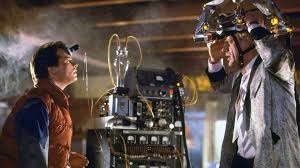
Breaking News
 Canada's MAID CULTURE OF DEATH Just Hit Rock Bottom: KILLING PRISONERS NOW!!!
Canada's MAID CULTURE OF DEATH Just Hit Rock Bottom: KILLING PRISONERS NOW!!!
 Weight gain single-handedly prevented by a gut microbe
Weight gain single-handedly prevented by a gut microbe
 Doug Casey on 2025's Defining Events and What Comes Next
Doug Casey on 2025's Defining Events and What Comes Next
 BREAKING: Officer Tatum & Other Investigators Believe A Potential Suspect In The Brown...
BREAKING: Officer Tatum & Other Investigators Believe A Potential Suspect In The Brown...
Top Tech News
 This tiny dev board is packed with features for ambitious makers
This tiny dev board is packed with features for ambitious makers
 Scientists Discover Gel to Regrow Tooth Enamel
Scientists Discover Gel to Regrow Tooth Enamel
 Vitamin C and Dandelion Root Killing Cancer Cells -- as Former CDC Director Calls for COVID-19...
Vitamin C and Dandelion Root Killing Cancer Cells -- as Former CDC Director Calls for COVID-19...
 Galactic Brain: US firm plans space-based data centers, power grid to challenge China
Galactic Brain: US firm plans space-based data centers, power grid to challenge China
 A microbial cleanup for glyphosate just earned a patent. Here's why that matters
A microbial cleanup for glyphosate just earned a patent. Here's why that matters
 Japan Breaks Internet Speed Record with 5 Million Times Faster Data Transfer
Japan Breaks Internet Speed Record with 5 Million Times Faster Data Transfer
 Advanced Propulsion Resources Part 1 of 2
Advanced Propulsion Resources Part 1 of 2
 PulsarFusion a forward-thinking UK aerospace company, is pushing the boundaries of space travel...
PulsarFusion a forward-thinking UK aerospace company, is pushing the boundaries of space travel...
 Dinky little laser box throws big-screen entertainment from inches away
Dinky little laser box throws big-screen entertainment from inches away
 'World's first' sodium-ion flashlight shines bright even at -40 ºF
'World's first' sodium-ion flashlight shines bright even at -40 ºF
Mind-reading AI turns thoughts into words using a brain implant

Joseph Makin at the University of California, San Francisco, and his colleagues used deep learning algorithms to study the brain signals of four women as they spoke. The women, who all have epilepsy, already had electrodes attached to their brains to monitor seizures.
Each woman was asked to read aloud from a set of sentences as the team measured brain activity. The largest group of sentences contained 250 unique words.
The team fed this brain activity to a neural network algorithm, training it to identify regularly occurring patterns that could be linked to repeated aspects of speech, such as vowels or consonants. These patterns were then fed to a second neural network, which tried to turn them into words to form a sentence.
Each woman repeated the sentences at least twice, and the final repetition didn't form part of the training data, allowing the researchers to test the system.
Each time a person speaks the same sentence, the brain activity associated will be similar but not identical. "Memorising the brain activity of these sentences wouldn't help, so the network instead has to learn what's similar about them so that it can generalise to this final example," says Makin. Across the four women, the AI's best performance was an average translation error rate of 3 per cent.



